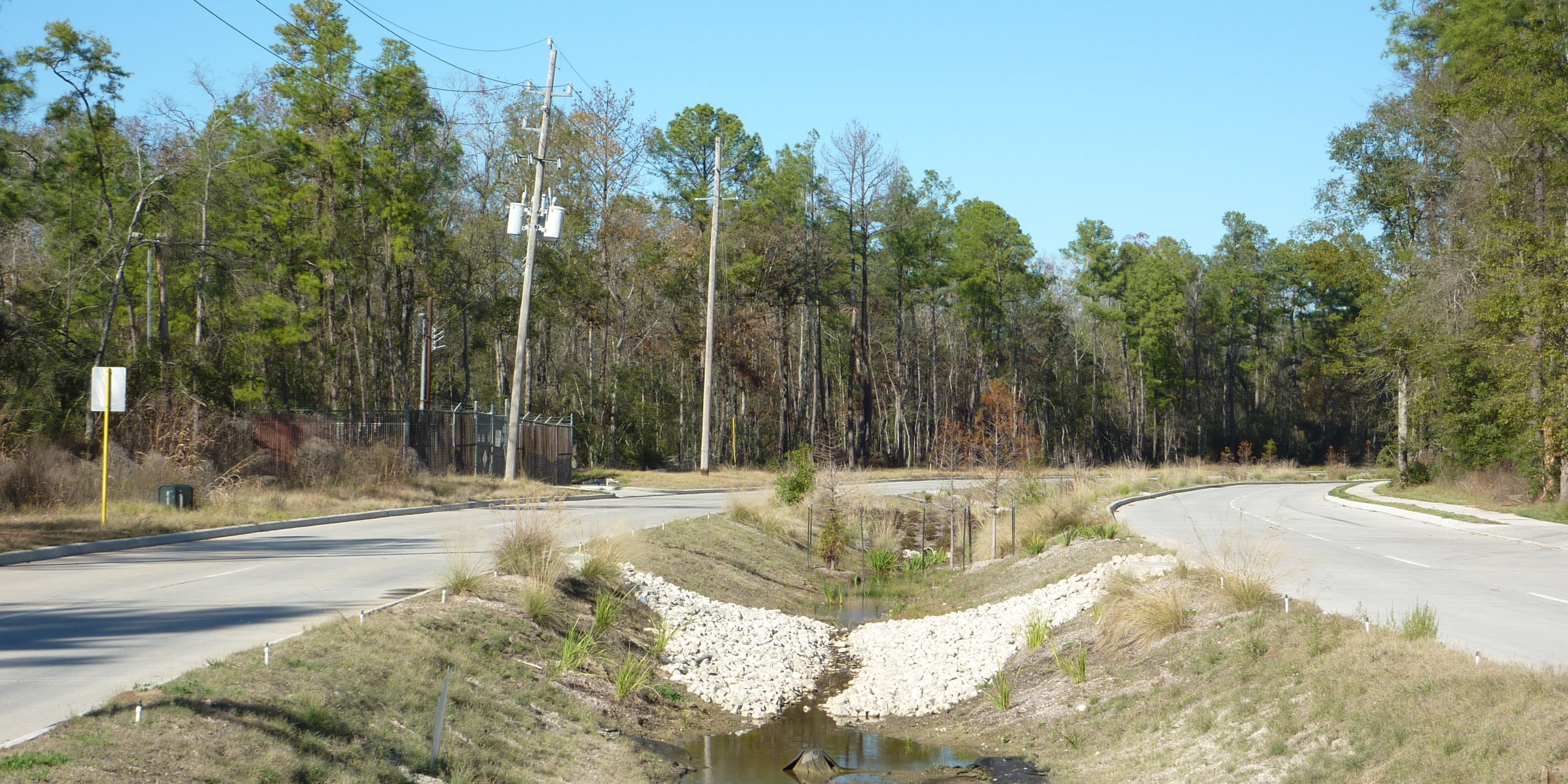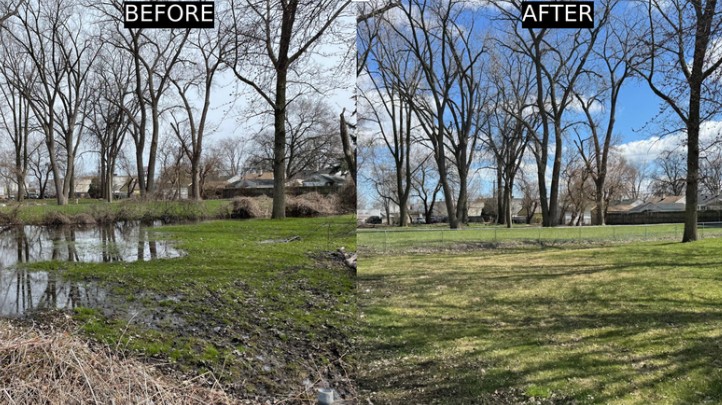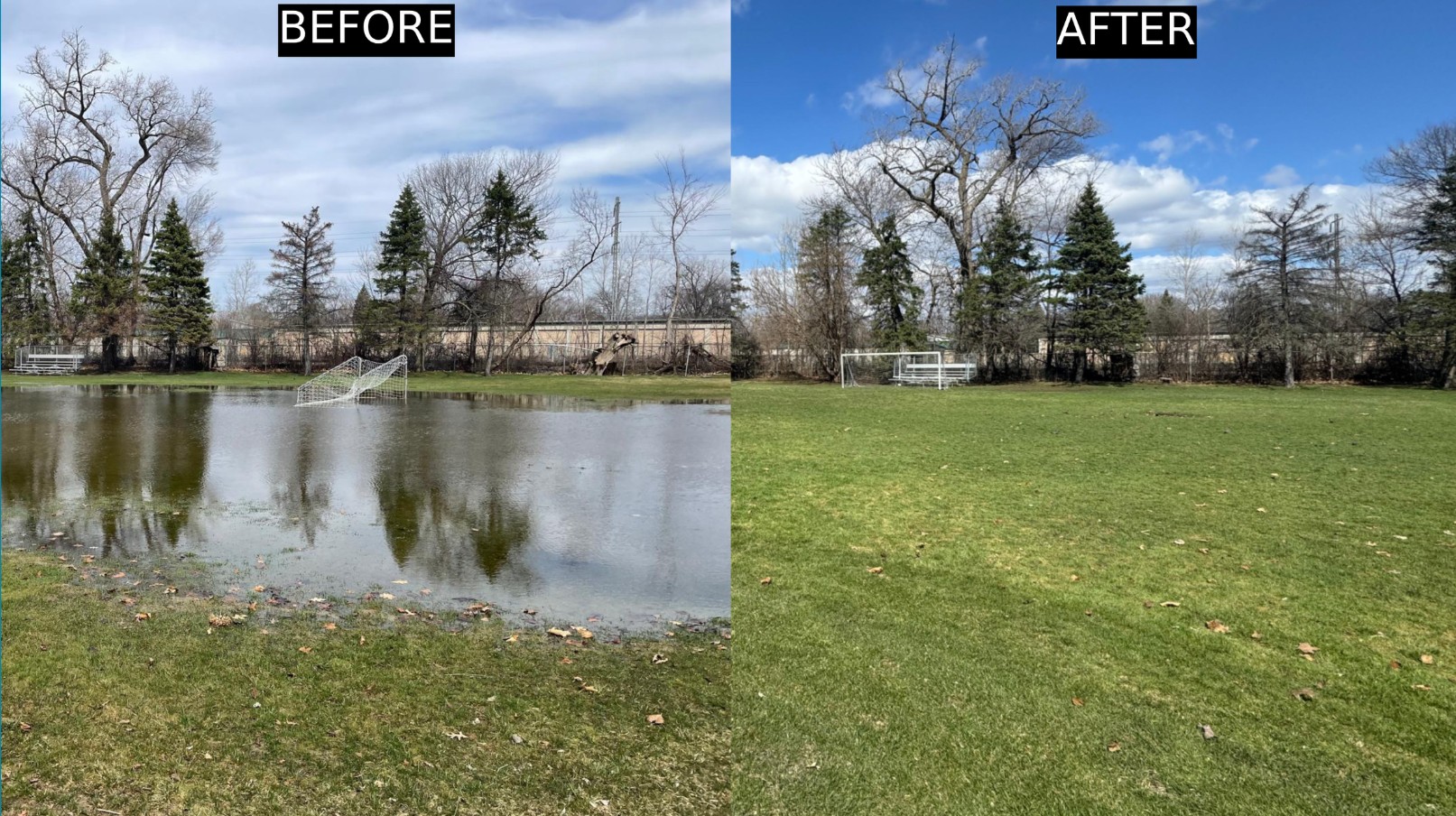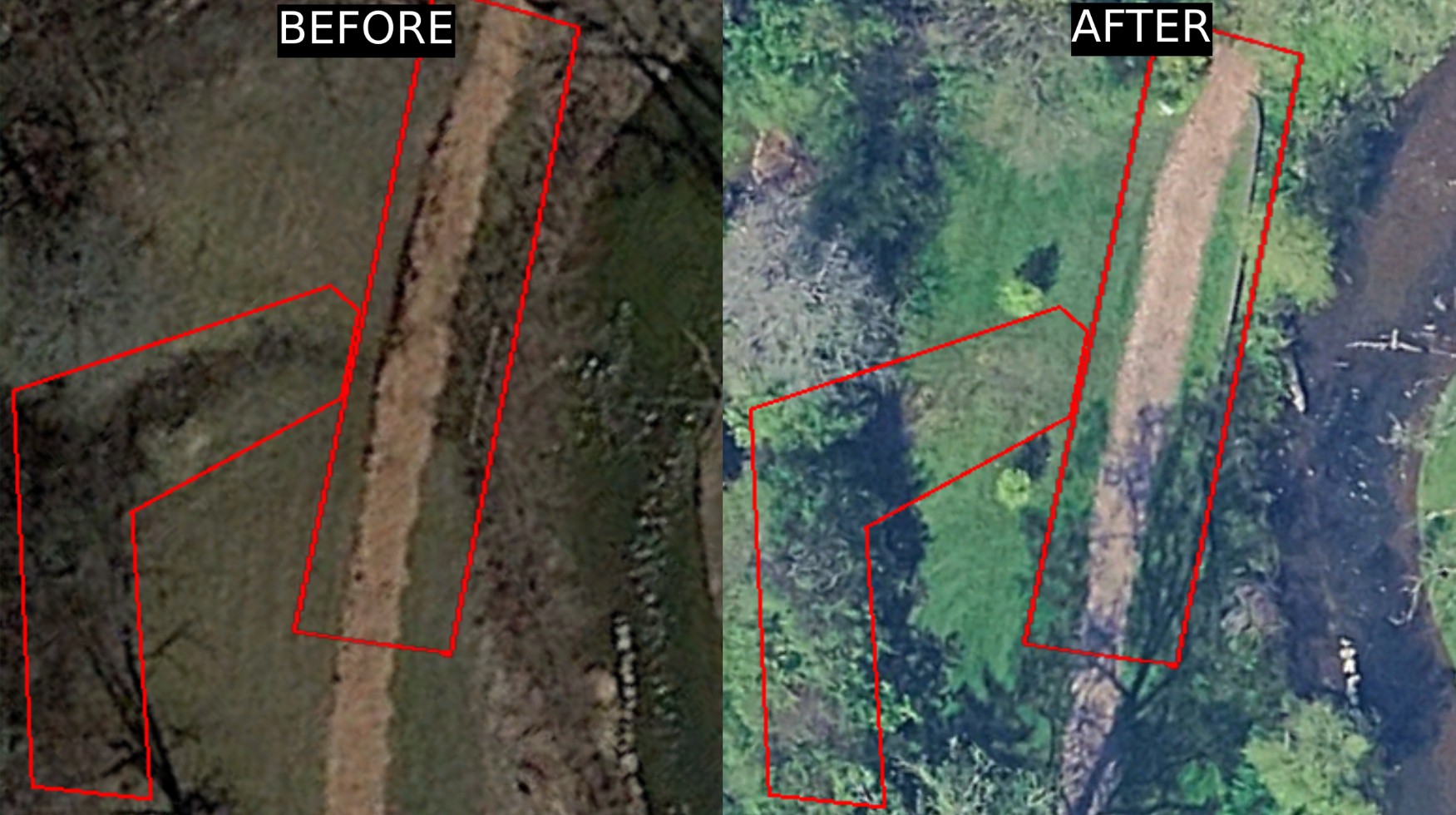
Upper Chesapeake Medical Center
FocalPoint’s Expandable Underdrain Allows For Decrease in Surface Area
The Kaufman Cancer Center in Bel Air, MD was in the process of a large expansion. In addition to modernizing and enhancing their facilities, they also required a larger parking lot. With finite square footage for the lot and the goal of obtaining as many parking spaces as possible, their team needed a strategic, space-saving approach for handling stormwater runoff and meeting stormwater requirements. Unfortunately, traditional bioretention systems are large, consequently reducing the available spaces.
Modern School Gets Modern GSI Solutions
NOLA Science School Showcases LID
Several years ago, leaders of the New Orleans Charter Science & Mathematics High School said they needed a new campus. Officials have now cut the ribbon on a $27.5 million building in the city’s medical and biosciences corridor. The three-story, 129,716-square-foot building has the capacity for 750 high school students and comes equipped with an outdoor learning space, science laboratories, visual art labs, advanced tech classrooms and a media center. Green Stormwater Infrastructure (GSI) was included in the design of the outdoor space, including permeable concrete pavers and high performance biofiltration with expanded, modular underground detention.
FocalPoint helps reduce traditional gray infrastructure
Mixed Use Development Uses FocalPoint to Manage Stormwater on Constrained Site
A small group of local developers in Scarborough, Maine proposed the development of a 525-acre mixed-use site, The Downs. Their vision was to create a new “downtown” for the community. Like many other neighborhoods in the area, the character and feel of a town’s center had been lost due to rapid growth and urban sprawl. The developers of The Downs project worked to solve the housing shortage in Southern Maine, meanwhile enhancing the small-town feel.
Green Roadway: Springwoods Village, Texas
Multifunctional Design for a Natural Looking Roadway
Coventry Development Corporation’s Development Standards and Guidelines helped serve the declaration that “Springwoods will balance nature, urbanism, and diversity to promote a timeless and healthy way of life”, by strongly encouraging the use of Low Impact Development Practices such as bioretention, bioswales, vegetated structural roadway shoulders, permeable pavers and rainwater harvesting and reuse. Scattered throughout both the public and private areas, you will find Low Impact Development Best Management Practices.
Bagby Street Gets Reimagined
Blending Sustainability with Urban Design
One of the main challenges was ensuring that the biofiltration system did not interfere with the robust root systems of the street trees. Traditional biofiltration planter boxes posed the risk of root intrusion, which could clog the underdrain and lead to flooding. The solution was to position the biofiltration system outside the tree’s drip zone, minimizing the potential for root interference while maintaining stormwater treatment efficiency.
Modern Bioswales and Detention to the Rescue
increasing Lot Yield by Using Low Impact Development
The next generation biofiltration strategies allowed the engineer to use a smaller footprint, reduce contractor error during installation, and keep the long-term maintenance costs low. 99% of lots were amenitized by locations on green spaces, while the solution also reduced Total Suspended Solids by 85%, Total Phosphorus by 52%, and Total Nitrogen by 60%.
Green Infrastructure at ASCE Headquarters
ASCE’s headquarters serves as a model for sustainable stormwater management.
In November, the American Society of Civil Engineers (ASCE) transformed its Reston, Virginia, headquarters parking lot into a green infrastructure showcase, demonstrating how sustainable design can mitigate stormwater pollution. A key element of this renovation was the integration of FocalPoint, a high-performance bioretention system, chosen for its ability to efficiently manage large runoff volumes in limited space.
Paving the Way with LID AND FOCALPOINT
How Birnamwood Drive Sets the Standard for LID Roadway Design in Harris County
Birnamwood Drive is located in northern Harris County, east of Spring, Texas. The existing roadway runs north/south between Fern Hill Drive and intersects Cypresswood Drive. The new section of Birnamwood is approximately 0.68 miles in length and extends from Fern Hill Drive north to Spring Creek Drive. This project is the first roadway project in the Houston area to implement Low Impact Development (LID) techniques and is viewed by Harris County as a stepping stone to implementing LID as its default roadway design approach throughout the County.
Queenston Manor Apartments implements LID
Unlocking Development Potential with Smart Stormwater Solutions
Queenston Manor Apartments is a 7.2-acre development adjacent to a master-planned community on Houston’s northwest side. Originally, Academy Development planned for nine apartment buildings to generate the required revenue stream. However, the project stalled when Harris County determined that the previously designated offsite detention volume was no longer available.
To overcome this challenge, EHRA, Inc. implemented a Low Impact Development (LID) approach featuring the FocalPoint High-Performance Modular Biofiltration System (HPMBS). This innovative design reduced the need for traditional detention ponds, allowing the project to proceed while maintaining sufficient drainage and maximizing buildable land.
Aguirre & Fields: Engineering Sustainability
Transforming Parking Lots into Green Infrastructure
Aguirre & Fields, LP, headquartered in Sugar Land, TX, specializes in infrastructure planning and engineering across Texas. Their expertise spans various civil engineering disciplines, including land development, site design, roadways, and bridges. In an effort to explore new market opportunities in Low Impact Development (LID) and Green Infrastructure, Aguirre & Fields decided to retrofit their own parking lot as a demonstration project. This retrofit serves as a real-world example to showcase the benefits of LID, such as enhanced aesthetic appeal, increased time of concentration, and decreased peak flows. Additionally, the installation of an R-Tank Reuse System has enabled them to reduce annual potable water use by over 50%.
Sustainable Solutions for a Smarter Future
How Kendall Library Transformed Stormwater Management
The newly constructed three-story Belle Sherman Kendall Library at 609 N. Eldridge serves as more than just a library—it functions as a full-fledged community center, complete with classrooms, after-school programs, and a half-gym. Designed to achieve LEED® Silver Certification, the project integrated sustainable features, including an underground water harvesting system fed by bioswales to support landscape irrigation. An engineered soil matrix was placed on the entire surface area of each swale to filter hydrocarbons and TSS found in storm water runoff prior to being stored in a 30,000 gallon rainwater harvesting system which are directly infiltrated without the need for inlets, and located beneath the swales where the stored water awaits reuse for landscape irrigation.
Redefining Urban Living
Smart Drainage Solutions for a Thriving Community
Kolbe Farms Townhomes, an environmentally conscious development by InTown Homes, was inspired by the 2010 Houston Land/Water Sustainability Forum’s Low Impact Development (LID) Design Competition. The competition showcased how LID techniques could reduce flash flooding, improve water quality, and provide economic benefits. Frank Liu, President of InTown Homes, was so impressed that he hired EHRA, Inc., the winner of the residential property design challenge, to incorporate LID principles into his townhome development.
The Tale of Two Ponds: Why SmartPOND Over Other Automated Valves
Simplicity Wins Over Hillwood Development at Wolf Ranch in Georgetown Texas
Hidden along the San Gabriel River, Wolf Ranch is Hillwood Developments premier development in Central Texas. With such a breathtaking location, environmental factors are of concern and choosing a partner to help navigate the regulatory process in critical. It is no wonder they chose Kimley-Horn to represent them in the latest phases of this master planned community.
Smart Solutions After the Storm: How Harris County Transformed Flood Control with smartPOND
Maximizing Infiltration, Minimizing Flood Risk, One Tailwater Pond at a Time
After Hurricane Harvey caused catastrophic flooding in Harris County, officials sought smarter ways to manage stormwater. By partnering with Convergent Water Technologies and installing the programmable smartPOND Rotary Weir, they were able to capture, store, and slowly release stormwater to maximize infiltration and reduce downstream flood risks. The system delayed 195 acre-feet of stormwater, recharging aquifers and minimizing pollutant runoff. smartPOND provided Harris County with a customizable, reliable, and environmentally responsible flood control solution.
From Bio to Batch: How SmartPOND Transformed Stormwater Management at Velsa Ranch
A $200K Win for Engineers and Developers in Cedar Park’s Booming Retail Sector
Faced with strict stormwater regulations near the Edwards Aquifer, the Velsa Ranch Retail Center in Cedar Park, Texas, originally planned an expensive bioretention system. With the help of Kimley-Horn and Convergent Water Technologies, the team pivoted to a more cost-effective and easily maintained SmartPOND batch detention system, saving over $200,000 and reducing construction complexity. This shift delivered a smarter, simpler, and scalable solution without compromising on regulatory compliance.
Smarter Stormwater: Balancing Flood Safety with Development Yield
A Custom SmartPOND Solution That Protected the Creek and Boosted ROI in Flash Flood Alley
In flood-prone Pflugerville, Texas, Cude Engineers faced a dilemma: meet detention requirements for Brio Apartments or risk harming the downstream creek. Collaborating with Convergent Water Technologies, they implemented a custom SmartPOND Rotary Weir system that dynamically responded to creek levels—cutting pond size in half, adding more rentable units, and enhancing flood safety. The innovative approach delivered a win for both the environment and the developer’s bottom line.
City of Hazel Park, MI – Community Garden
Project Highlights and Outcomes
- Area faced standing water, flooding, and unstable ground
- Post-installation, no standing water, no flooding, stable ground
- GEPS handled 5x more rainfall than previous years without standing water
- Linear Feet of GEPS: 1,920 ft
- Installation time: 4 days with 1 Exlterra HAZL Rigs
- Individual GEPS Units: 88
- Estimated Volume managed by GEPS: 5.7in of runoff volume in 24hrs
City of Pleasant Ridge, MI – Victory Park / Flynn Field
Project Highlights and Outcomes
- Area faced unplayable, unstable ground and standing water
- Post-installation, playable space, stable ground, no standing water
- City Manager of Pleasant Ridge observed firmer soil, lower mosquito population, and healthier and drought-resistant turf
- Linear Feet of GEPS: 3,900 ft
- Installation time: 8 days with 1 Exlterra HAZL Rig
- Individual GEPS Units: 316
- Estimated Volume managed by GEPS: 9.8in of runoff volume in 24hrs
City of Birmingham, MI – Fairway Park
Project Highlights and Outcomes
- Area faced constant saturation, flooding, standing water next to 15ft deep river
- Post-installation, stable ground, no standing water, balanced soil moisture
- City Manager of Birmingham observed that GEPS provided residents with “A reliable, walkable path with no further maintenance required.”
- Linear Feet of GEPS: ft 390
- Installation time: 2 days with 1 Exlterra HAZL rig
- Individual GEPS Units: 39
- Estimated Volume managed by GEPS: 6.3in of runoff volume in 24hrs






































































